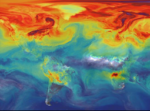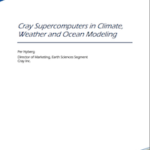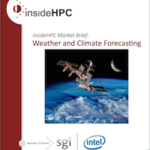ISC is an annual global event in which high performance computing (HPC) users and technology providers come together to discuss the prospects of HPC in different areas. A concerns to us all is weather forecasting….
Weather and Ocean Modeling with Super Computers
The practical impact of weather, climate and ocean prediction on the world’s population and economy drives the usage of high performance computing (HPC) for earth system modeling. The socioeconomic impacts of improved predictive capabilities are well-recognized by scientists as well as government leaders. The earth’s environment plays an important role in shaping economies and infrastructures, and touches upon nearly every aspect of our daily lives, including recreational activities, food supplies and energy resources.
Weather and Climate Forecasting
In the pantheon of HPC grand challenges, weather forecasting and long-term climate simulation rank right up there with the most complex and com- putationally demanding problems in astrophysics, aeronautics, fusion power, exotic materials,and earthquake prediction, to name just a few. Modern weather prediction requires cooperation in the collection of observed data and sharing of forecasts output among all nations, a collabora- tion that has been ongoing for decades. This data is used to simulate effects on a range of scales— from events, such as the path of tornados, that change from minute to minute and move over distances measured in meters, to turnover of water layers in the ocean, a process that is measured in decades or even hundreds of years, and spans thousands of miles.







